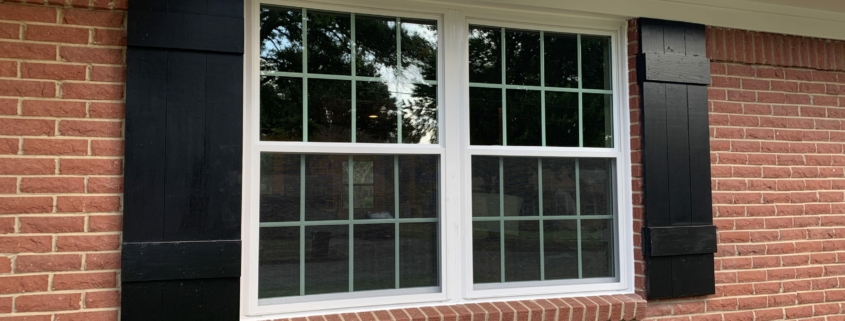What Are The Different Window Grid Styles?
Windows grids are decorative patterns of horizontal and vertical bars that divide a window into smaller sections. They add visual interest to the window and can enhance the overall aesthetics of a home. This article will explore the different window grid styles, understand their purpose, learn about their history, examine their anatomy, and discuss how to choose the right window grid for your home. We will also delve into the impact of window grids on home aesthetics, including their role in enhancing curb appeal and interior design.
Understanding Window Grids
Window grids serve both functional and decorative purposes. Functionally, they provide structural stability to the window, ensuring its durability. Additionally, grids can divide large windows into smaller sections, allowing for better control of sunlight and ventilation.
From a design perspective, window grids add character and charm to a home’s exterior and interior. They can evoke a specific architectural style, enhance curb appeal, and create a visually appealing backdrop for interior design. Understanding the purpose and history of window grids can deepen our appreciation of their significance.
The Purpose of Window Grids
Window grids were originally used for practical reasons. Early windows were made of small panes of glass held together by lead strips, known as muntins. The grids provided structural support to eliminate the need for larger panes of glass, which were costlier to produce and more prone to breakage.
Today, while modern windows are typically made with large sheets of glass, window grids still create a traditional look and feel. They can evoke a sense of nostalgia, harkening back to a time when windows were crafted with smaller panes.
Moreover, window grids offer additional benefits beyond their functional purpose. They can enhance privacy by obscuring the view from the outside while still allowing natural light to enter the room. This is particularly useful for homes in densely populated areas or near busy streets.
Furthermore, window grids can also serve as a decorative element on the interior of a home. They can be painted or stained to match the room’s overall color scheme and style, adding a touch of elegance and sophistication.
The History of Window Grids
The use of window grids dates back to medieval times when glass manufacturing techniques limited the size of individual glass panes. As glass-making technology advanced, larger panes became more feasible, making using grids less necessary. However, the aesthetic appeal of window grids endured, and they continued to be used in various architectural styles, evolving along with changing design trends.
In colonial America, window grids were common in houses influenced by European architectural styles. As the country expanded westward, the grid patterns evolved to reflect regional design preferences. Prairie grids, Craftsman grids, and Victorian grids emerged as distinctive styles.
Each architectural style had its unique grid pattern, reflecting the era and cultural influences of the time. For example, Prairie grids, popularized by Frank Lloyd Wright, featured horizontal and vertical lines that echoed the vast open landscapes of the American Midwest. On the other hand, Victorian grids were characterized by intricate and ornate designs, showcasing the opulence and attention to detail of the Victorian era.
Today, window grids are popular for homeowners seeking to add character and style to their homes. With advancements in manufacturing and design, window grids can be customized to suit individual preferences, allowing for endless possibilities in creating a unique and personalized look.
The Anatomy of a Window Grid
Before exploring the different types of window grids, let’s closely examine their anatomy. Grids consist of several components that come together to create the overall pattern:
Grid Components
The main components of a window grid are the horizontal bars, known as horizontal muntins, and the vertical bars, called vertical muntins. These intersect to form smaller sections within the window. Grids can also include additional elements, such as decorative corner brackets, rosettes, or mullions, further enhancing their visual appeal.
Grid Placement and Patterns
The placement and pattern of the grids play a crucial role in determining the overall look of a window. Common grid patterns include diamond, colonial, prairie, and craftsman styles. The choice of pattern depends on the architectural style of the home and the desired aesthetic effect.For example, colonial grids typically feature a symmetrical pattern with equally sized squares, evoking a sense of tradition and symmetry. Prairie grids, conversely, often consist of vertical bars extending to the window’s top to create a more expansive and open feel.
Common Window Grid Styles
Now that we have a solid understanding of the purpose and anatomy of window grids let’s explore the different types of grids that are commonly used today:
Colonial Grids
Colonial grids are characterized by their symmetrical pattern, featuring evenly sized squares that create a classic and traditional look. This style is often associated with colonial and Georgian architectural designs.
Prairie Grids
Prairie grids originated from the Prairie School architectural style developed by Frank Lloyd Wright. These grids typically have vertical bars extending to the window’s top, creating a horizontal emphasis. They are commonly featured in homes with a modern or contemporary architectural style.
Craftsman Grids
Derived from the Arts and Crafts movement, Craftsman grids emphasize simplicity and craftsmanship. They often feature a combination of vertical and horizontal bars, focusing on clean lines and geometric shapes. Craftsman grids are commonly found in bungalow-style homes.
Victorian Grids
Victorian grids are characterized by intricate and ornate designs, typically seen in homes influenced by the Victorian architectural style. This style often incorporates curved or arched muntin patterns and decorative corner brackets, adding a touch of elegance and sophistication.
Choosing the Right Window Grid
When selecting a window grid, several factors should be considered:
Factors to Consider
First and foremost, consider the architectural style of your home. Ideally, the grid pattern should complement the overall design, enhancing its visual appeal rather than competing. Additionally, take into account the size and proportion of your windows. Choosing a grid pattern that suits the window’s dimensions can create a harmonious and balanced aesthetic. Consider your preferences and the atmosphere you wish to create. Grids can evoke different moods and styles, so choose a pattern that resonates with your taste and complements your interior design scheme.
The Impact of Window Grids on Home Aesthetics
Window grids have a significant impact on the aesthetics of a home, both externally and internally. Let’s explore two key aspects of this impact.
Enhancing Curb Appeal with Grids
Grids can be a powerful tool in improving a home’s curb appeal. They add visual interest and character to the exterior, making the house stand out and appear more welcoming. Choosing the right grid pattern that complements the architectural style can elevate the overall curb appeal of your home.
Grids and Interior Design
Window grids also play a crucial role in interior design. They create a frame for the view outside, adding depth and visual texture to the room. The choice of grid pattern can either emphasize or downplay the view and dictate the amount of natural light entering the space. Understanding the impact of window grids on interior design allows homeowners to make informed decisions when considering grid options.
In conclusion, window grids come in various styles and patterns, each with unique characteristics and historical significance. Understanding the purpose, anatomy, and different types of window grids helps homeowners make informed decisions when choosing grid patterns that enhance their home’s overall aesthetic appeal. Whether striving to evoke a sense of tradition, emphasize a particular architectural style, or enhance visual interest, window grids are important in adding charm and character to any home.
Window Depot USA of Tyler, TX, combines premium grade replacement window products with factory-direct pricing, a Transferable Lifetime Limited Warranty, and professional, courteous installation to offer the very best value in the industry today! Call us at (903) 752-0449 for a free, no-obligation quote, and find out firsthand what sets Window Depot of Tyler, TX, apart from the rest of the crowd. We’d be honored by the opportunity to earn your business!
Our service area includes the following towns: Tyler, Whitehouse, Bullard, Lindale, Chandler, Canton, Mineola, Longview, Kilgore, Henderson, Gilmer, Gladewater, Marshall, Hallsville, and Palestine.









